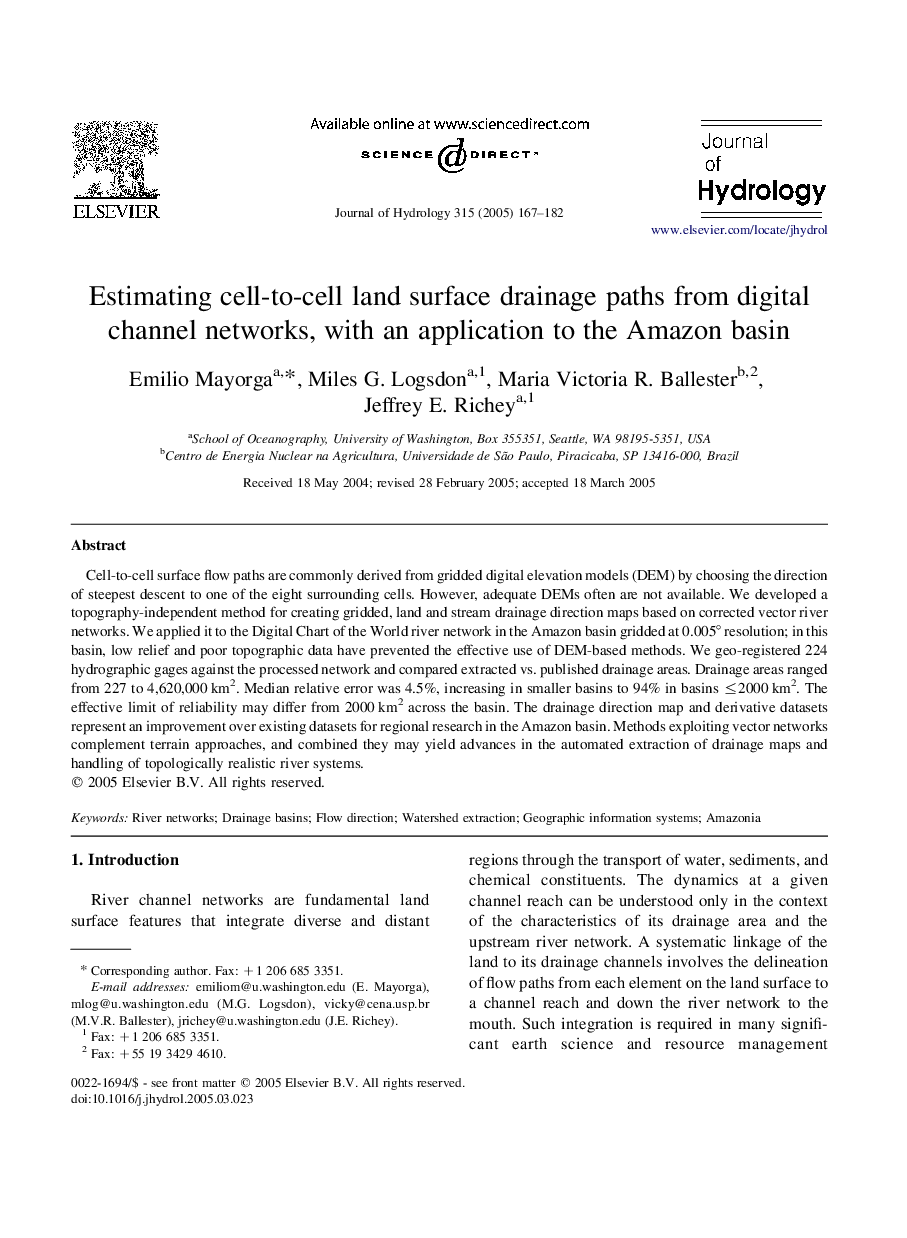| Article ID | Journal | Published Year | Pages | File Type |
|---|---|---|---|---|
| 9491245 | Journal of Hydrology | 2005 | 16 Pages |
Abstract
Cell-to-cell surface flow paths are commonly derived from gridded digital elevation models (DEM) by choosing the direction of steepest descent to one of the eight surrounding cells. However, adequate DEMs often are not available. We developed a topography-independent method for creating gridded, land and stream drainage direction maps based on corrected vector river networks. We applied it to the Digital Chart of the World river network in the Amazon basin gridded at 0.005° resolution; in this basin, low relief and poor topographic data have prevented the effective use of DEM-based methods. We geo-registered 224 hydrographic gages against the processed network and compared extracted vs. published drainage areas. Drainage areas ranged from 227 to 4,620,000 km2. Median relative error was 4.5%, increasing in smaller basins to 94% in basins â¤2000 km2. The effective limit of reliability may differ from 2000 km2 across the basin. The drainage direction map and derivative datasets represent an improvement over existing datasets for regional research in the Amazon basin. Methods exploiting vector networks complement terrain approaches, and combined they may yield advances in the automated extraction of drainage maps and handling of topologically realistic river systems.
Related Topics
Physical Sciences and Engineering
Earth and Planetary Sciences
Earth-Surface Processes
Authors
Emilio Mayorga, Miles G. Logsdon, Maria Victoria R. Ballester, Jeffrey E. Richey,
